REPUBBLICA SOCIALE ITALIANA....... no policy,only historical information.
Don't wanna be here? Send us removal request.
Text
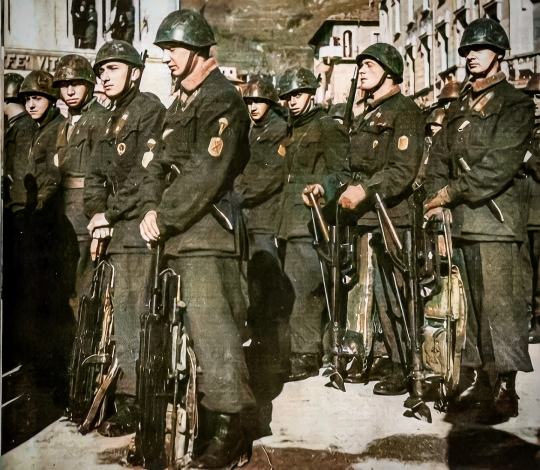
#decima flottiglia mas#war world#world war 2#world war ii#history#repubblica sociale italiana#storia italiana#wwii#military#histoire
12 notes
·
View notes
Text

#decima flottiglia mas#war world#world war 2#world war ii#history#repubblica sociale italiana#storia italiana#wwii#histoire#military
9 notes
·
View notes
Text
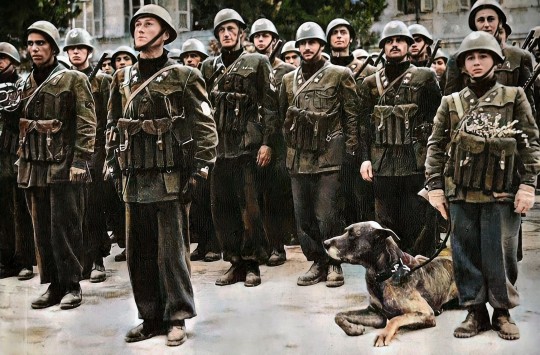
Btg Barbarigo
#decima flottiglia mas#world war 2#war world#history#world war ii#wwii#J.V.Borghese#repubblica sociale italiana#storia italiana
33 notes
·
View notes
Text

7 notes
·
View notes
Text


#ww2 #ww2italia #ww2incolor #ww2heros #ww2history #ww2daily #ww2dailyhistory #ww2italian #ww2italianfront #ww2italy #decimaflottigliamas #ww2hero #ww2rsi #ww2pictures #ww2italian #ww2fronts #ww2italianfront #storia #storiaitaliana #guerra
7 notes
·
View notes
Text

#decima flottiglia mas#war world#world war 2#world war ii#history#histoire#decimaflottigliamas#repubblica sociale italiana
8 notes
·
View notes
Text


Il comandante Borghese di fronte alla sede del distaccamento in p.zza Fiume (p.zza repubblica )
#decima flottiglia mas#world war 2#war world#world war ii#history#ww2dailyhistory#ww2history#ww2incolor#ww2#ww2italia#história#storia italiana 1944#true story#repubblica sociale italiana#storia italiana#storia#Junio Valerio Borghese
12 notes
·
View notes
Text

"Temerari", era uno di quei reparti autonomi che il Comando della Decima Flottiglia Mas usava dislocare in determinate località a seconda di contingenti esigenze operative. Questa formazione militare, costituita da soli venticinque uomini arruolatisi volontariamente, venne acquartierata agli inizi del 1944 a Genova, presso una casermetta prossima alla foce del torrente Bisagno.
Il plotone "Temerari" ebbe inizialmente il compito di sorvegliare la zona del lungomare, in particolar modo l'ultimo tratto di spiaggia che era stato precedentemente minato, in previsione di un possibile sbarco alleato. Per caratterizzare la propria uniforme gli appartenenti a questa unità decisero in maniera autonoma di adottare un apposito distintivo, recante i classici simboli della Decima ( teschio con rosa, ancora e X rossa ) e le denominazioni del reparto, da appuntarsi sulla tasca sinistra.
"Reckless" was one of those autonomous units that the Command of the 10th Mas Flotilla used to deploy in certain locations according to contingent operational needs. This military formation, consisting of only twenty-five men who volunteered, was quartered at the beginning of 1944 in Genoa, in a small barracks near the mouth of the Bisagno stream.
The "Bold" platoon initially had the task of monitoring the area of the seafront, especially the last stretch of beach that had previously been mined, in anticipation of a possible allied landing. To characterize their uniform, the members of this unit independently decided to adopt a special badge, bearing the classic symbols of the Tenth (skull with rose, anchor and red X) and the denominations of the department, to be pinned on the left pocket.
#decima flottiglia mas#war world#world war 2#world war ii#history#repubblica sociale italiana#histoire#storia italiana#military#hist?ria#ww2heroes
13 notes
·
View notes
Text










Il Corpo Femminile Volontario per i Servizi Ausiliari delle Forze Armate Repubblicane, meglio noto come Servizio Ausiliario Femminile è stato un corpo femminile delle forze armate della Repubblica Sociale Italiana, le cui componenti, tutte volontarie, sono comunemente indicate come ausiliarie. Wikipedia
The Volunteer Female Corps for Auxiliary Services of the Republican Armed Forces, better known as the Female Auxiliary Service was a female body of the armed forces of the Italian Social Republic, whose members, all voluntary, are commonly referred to as auxiliaries.
#decima flottiglia mas#war world#world war 2#world war ii#history#repubblica sociale italiana#histoire#storia italiana#military#hist?ria#ww2women#ww2incolor#ww2heroes#ww2history#ww2#ww2dailyhistory#ww2daily#ww2photo#ww2italia#ww2italian#ww2italy#ww2italianfront#storia italiana 1944#true story#storia#história#hero#historic fashion
17 notes
·
View notes
Text






Military of the RSI/ Decima mas
#decima flottiglia mas#war world#world war 2#world war ii#history#repubblica sociale italiana#histoire#storia italiana#military#hist?ria#ww2incolor#ww2heroes#ww2history#ww2#ww2italia#ww2italian#ww2italy#ww2images#ww2fronts
29 notes
·
View notes
Text

Battaglione Fulmine, costituito a La Spezia nella primavera del 1944, operò in provincia di Torino e Cuneo, nel Trevigiano, in Carnia, nel Goriziano e, sul finire del conflitto, anche nel Vicentino, periodo cui il volume dedica parecchie pagine. Si scontrò spesso con i partigiani: l'episodio bellico più noto è la sanguinosa battaglia di Tarnova della Selva, nella quale il reparto sacrificò buona parte degli effettivi per impedire ai partigiani di Tito l'invasione di Gorizia.
Battalion Lightning, established in La Spezia in the spring of 1944, operated in the provinces of Turin and Cuneo, in the Treviso area, in Carnia, in the Gorizia area and, at the end of the conflict, also in the Vicenza area, a period to which the volume devotes several pages. He often clashed with the partisans: the best-known war episode is the bloody battle of Tarnova della Selva, in which the unit sacrificed a large part of its personnel to prevent Tito's partisans from invading Gorizia.
#decima flottiglia mas#war world#world war 2#world war ii#history#repubblica sociale italiana#histoire#storia italiana#military#hist?ria
19 notes
·
View notes
Text
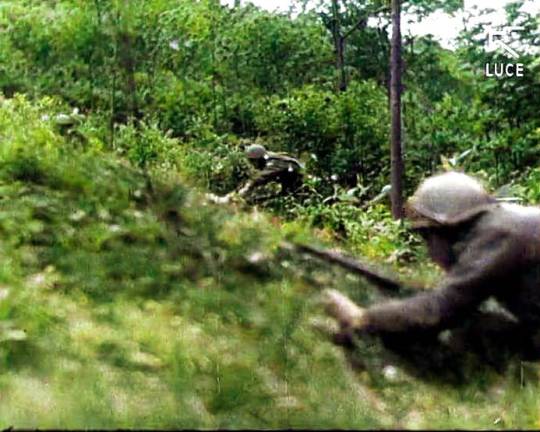



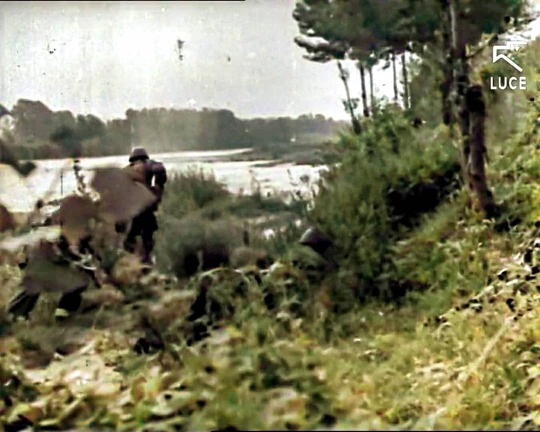
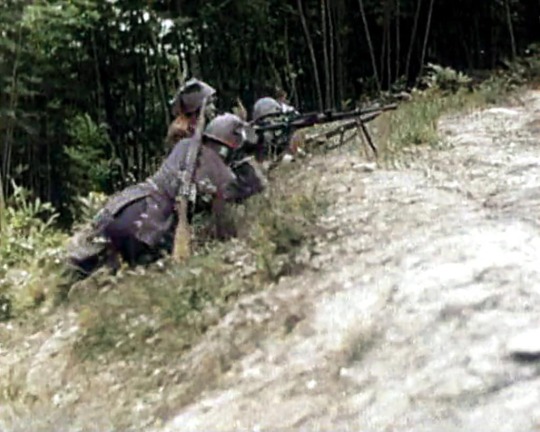
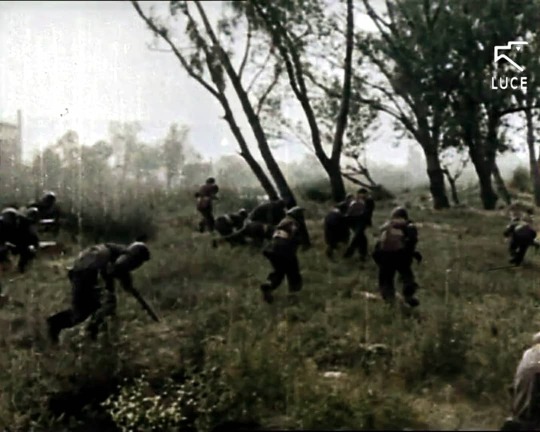
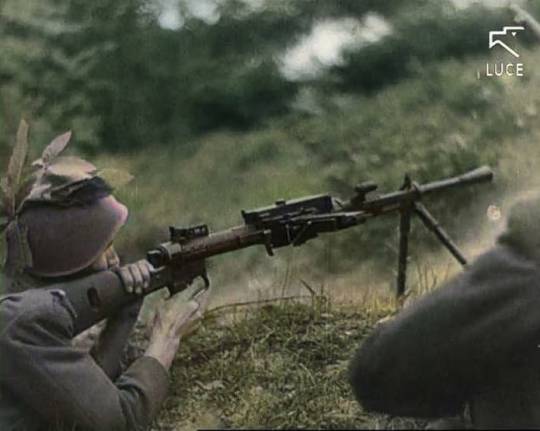
La "battaglia dei fiumi" si conclude sul Senio
Dopo la liberazione di Cesena (20 ottobre 1944), Forlì (9 novembre), Ravenna (4 dicembre) e Faenza (16 dicembre), l'avanzata dell'VIII Armata si ferma sul fiume Senio, che diventa "il Romagnolo Piave" (M . Valgimigli).
Il 5 gennaio i canadesi liberano S. Alberto da Ravenna e raggiungono il Reno, dove a nord termina l'azione degli Alleati. Nell'ultima battaglia, i tedeschi perdono 300 uomini e circa 600 cadono prigionieri. La popolazione è costretta a sfollare.
Il 7 gennaio l'VIII Armata si trova tra la dorsale appenninica e l'Adriatico, lungo la linea dei fiumi Senio e Reno. L'operazione "Olive" si considera conclusa.
Fino a marzo i tedeschi si concentreranno nell'area del contingente della 26. Divisione Panzer e del 504 ° Reparto Corazzato Pesante, equipaggiati con carri Tiger, intervallati da unità dei battaglioni Lupo e NP del Decima Mas e da altri corpi militari di l'RSI.
Il fiume Senio è poco più di un torrente, ma con sponde altissime, occupate su entrambi i lati dalle forze opposte, con trincee così vicine che i soldati possono scambiarsi messaggi e sigarette. "Di giorno stai rintanato in casa, di notte vai di pattuglia."
Iniziata in ottobre da Rimini, la "battaglia dei fiumi Po", attraverso i torrenti che si susseguono al Rubicone, è stata caratterizzata da piogge incessanti, che hanno fatto straripare i corsi d'acqua e inzuppato il terreno, impedendo l'avanzamento dei carri e dei l'artiglieria degli attaccanti.
Gli stessi tedeschi pensarono di creare le condizioni per il grande fango, che impantanò gli Alleati, rompendo gli argini che contengono le acque delle saline e delle valli di Comacchio.
Predetta in modo ottimistico come una corsa rapida e inarrestabile attraverso la Pianura Padana, la seconda fase dell'offensiva alleata alla Linea Gotica si è trasformata in un avanzamento lento e molto faticoso.
www.bibliotecasalaborsa.it
The "battle of the rivers" ends on the Senio
After the liberation of Cesena (20 October 1944), Forlì (9 November), Ravenna (4 December) and Faenza (16 December), the advance of the VIII Army stops on the river Senio, which becomes "the Romagnolo Piave" ( M. Valgimigli).
On January 5, the Canadians liberate S. Alberto from Ravenna and reach the Rhine, where the Allied action ends in the north. In the last battle, the Germans lose 300 men and about 600 fall prisoners. The population is forced to displace.
On 7 January, the VIII Army is located between the Apennine ridge and the Adriatic, along the line of the Senio and Reno rivers. The "Olive" operation is considered concluded.
Until March the Germans will concentrate in the contingent area of the 26th Panzer Division and the 504th Heavy Armored Department, equipped with Tiger tanks, interspersed with units from the Wolf and NP battalions of the Decima Mas and other military corps of the RSI .
The Senio River is little more than a stream, but with very high banks, occupied on both sides by opposing forces, with trenches so close that soldiers can exchange messages and cigarettes. "You're holed up in the house during the day, patrolling at night."
Started in October from Rimini, the "battle of the Po rivers", through the streams that follow one another to the Rubicon, was characterized by incessant rains, which caused the waterways to overflow and soak the ground, preventing the advancement of the wagons and the artillery of the attackers.
The Germans themselves thought of creating the conditions for the great mud, which bogged down the Allies, breaking the banks that contain the waters of the salt flats and valleys of Comacchio.
Optimistically predicted as a swift and unstoppable race across the Po Valley, the second phase of the allied offensive to the Gothic Line has turned into a slow and very tiring advance.
www.bibliotecasalaborsa.it
#decima flottiglia mas#war world#world war 2#world war ii#history#histoire#repubblica sociale italiana#military#storia italiana#hist?ria#ww2photo#ww2history#ww2#ww2incolor#wwii
8 notes
·
View notes
Text




La battaglia dei tre fiumi, fu uno scontro armato avvenuto durante la seconda guerra mondiale in Italia. Si svolse nell'aprile 1945 fra le forze tedesche della X armata e quelle britanniche e polacche dell'VIII armata britannica. Wikipedia
The battle of the three rivers was an armed confrontation that took place during the Second World War in Italy. It took place in April 1945 between the German forces of the 10th Army and the British and Polish forces of the British 8th Army. Wikipedia
#decima flottiglia mas#war world#world war ii#world war 2#repubblica sociale italiana#history#histoire#storia italiana#hist?ria#military#ww2history#ww2incolor#ww2#ww2italia#ww2italy
4 notes
·
View notes
Text




Rodolfo Graziani (Filettino, 11 agosto 1882 – Roma, 11 gennaio 1955) è stato un generale e politico italiano.
Venne impiegato nel Regio Esercito italiano durante la prima guerra mondiale. Nel primo dopoguerra aderì al fascismo, divenendone una delle figure di spicco. Ebbe responsabilità di comando durante le guerre coloniali italiane: nella riconquista della Libia (1921-1931), nella Guerra d'Etiopia e successivamente nella repressione della guerriglia abissina (1935-1937). Il suo ruolo in Libia e i suoi metodi brutali gli valsero il soprannome di "macellaio del Fezzan"[1].
Durante la seconda guerra mondiale divenne comandante superiore e governatore generale nella Libia italiana subentrando nella carica a Italo Balbo, ma venne duramente sconfitto dall'esercito britannico (1940-1941) e sostituito. Dopo un periodo di ritiro accettò da Mussolini l'incarico, nella costituenda Repubblica Sociale Italiana, di Ministro della Guerra, che mantenne fino al crollo finale del 1945, prendendo parte alla lotta contro gli anglo-americani e contro la Resistenza italiana.
Wikiwand
Rodolfo Graziani (Filettino, August 11, 1882 - Rome, January 11, 1955) was an Italian general and politician.He was employed in the Italian Royal Army during the First World War. In the first postwar period he joined fascism, becoming one of the leading figures. He had command responsibilities during the Italian colonial wars: in the reconquest of Libya (1921-1931), in the Ethiopian War and subsequently in the repression of the Abyssinian guerrillas (1935-1937). His role in Libya and his brutal methods earned him the nickname "butcher of Fezzan" [1].During the Second World War he became superior commander and governor general in Italian Libya taking over from Italo Balbo, but was severely defeated by the British army (1940-1941) and replaced. After a period of retirement he accepted from Mussolini the post of Minister of War in the newly established Italian Social Republic, which he held until the final collapse of 1945, taking part in the struggle against the Anglo-Americans and the Italian Resistance.
#decima flottiglia mas#war world#world war 2#history#repubblica sociale italiana#world war ii#storia italiana#histoire#hist?ria#military#ww2#ww2italia#ww2incolor#ww2daily#ww2italy#ww2italian#ww2history
13 notes
·
View notes



